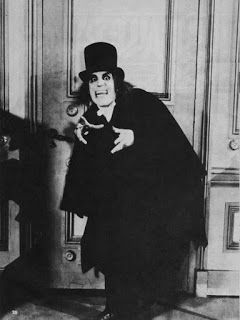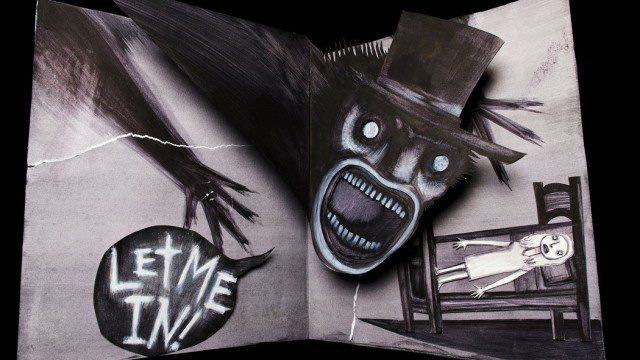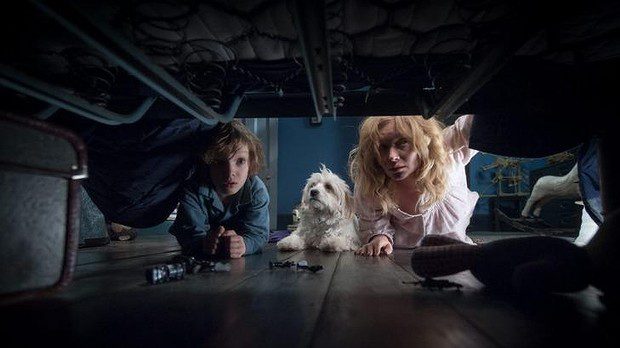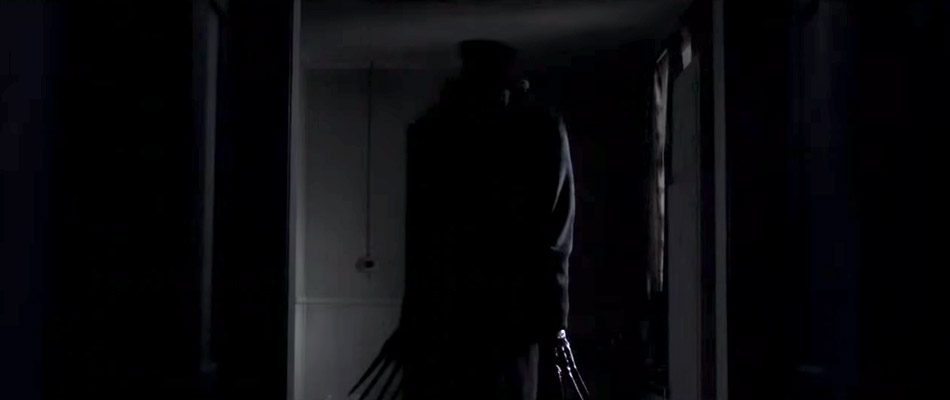The Babadook is a film that you most likely haven’t seen or even heard of, which is a shame because it’s arguably one of the best films of 2014 regardless of genre. Never have I been so terrified and excited while watching a film as I was when taking part in a viewing of The Babadook. It’s the kind of movie the begs to be talked about, begs to be deconstructed, and dares you to come to your own conclusion to its ending and it’s entire nature as a film. Seriously, go out right now and catch it if you can in theaters, or on VOD as I’ll probably be spoiling some of the fun during this review.
Directed by Jennifer Kent and based on her 2005 short film Monster, The Babadook follows the story of Amelia, several years after the violent and sudden death of her husband while on their way to deliver her only child, Sam. Six years have passed and the two seem to be living a comfortable, if challenging, life with Sam in school and Amelia working as a nurse in an elderly care facility.
Unfortunately, as the anniversary of her husband’s death, and Sam’s birthday, approaches, Sam begins to show signs of violent behavior, both in school and at home. While on the outside this all may seem pretty normal for a child growing up and a mother doing her best to cope, the situation is far more nuanced than at first presented. What we begin to see early on is that Amelia has a hard time truly loving her son because of the terrible memories that she associates with him and the death of her husband. Internally she blames Sam for his death and has done her best to bottle those feelings away, making for a sad first arc to the film.
One evening, as Amelia is putting Sam to bed, a book appears of his shelf titled, The Babadook. Sam demands she read this new book and we quickly come to find out that it is full of violent imagery that scares both Sam and Amelia. This is the first instance in which we get our look at the film’s title character, The Babadook. Sam contends that this strange shadow-like creature is the same entity that has been haunting his dreams and over the course of the next few days his dreams become reality in the form of daytime hallucinations of the creature.
Trying her best to cope, Amelia is forced to medicate her son as she hasn’t been sleeping well either with her own strange visions that she attributes to lack of sleep. Unfortunately, these these visions begin to manifest themselves in more sinister ways and lead to Amelia spiraling into a state of despair and insanity as The Babadook book reappears in her home after she had destroyed it. Slowly, The Babadook makes his presence known in the home, and outside of it making it all the more terrifying as an entity, and Amelia loses herself to the creature and begins to torment Sam in an attempt to feed him to it.
As a it stands, The Babadook is an amazingly tense film, not for what it is, but for what it’s not. The film doesn’t rely on jump scares as the creature slowly builds its presence without popping out at you screaming bloody murder. We also don’t get a ridiculous gore fest that serves only as a form of torture porn that seems to be so prevalent in today’s horror films. Instead, the tension is built-in our minds as we begin to make connections with what The Babadook may really be. Even better is that the film wraps this up with a bow and gives a definitive answer to the creature while still doing a masterful job of leaving it open to audience interpretation.
**What Follows Is A Spoiler Filled Interpretation Of The Film**
It’s an amazingly fresh take on the shadow archetype and pulls a great deal of the work of Psychologist, Carl Jung to really get inside ones head. There are a number of interpretations on what exactly The Babdook really is, but I’ll do my best to explain how I see the film. Very early in the film we find that Amelia is having a hard time coping with both her life and her son, Sam. We also learn that she was once a writer of children’s books before her husband died, a tragedy that not only shook her very being, but forced her to give up on her dreams to raise her son. This leads her to building a resentment towards her son Sam, a resentment that comes to a boil over time as he begins to act out towards her and the world around him.
The Babdook book is our first instance that Amelia may in some way be responsible for the Babadook creature itself. Being that she was a children’s book author makes this scenario plausible. The imagery in the book serves as her outlet to the built up pain and frustration with regards to Sam, thus the creature wanting to feed on him instead of on Amelia. Sure, Amelia’s psychosis could have just manifested and led her to kill her child in some rage, but The Babadook book also serves as a warning and explanation for her actions. She gets to see what the future holds for her and has the opportunity to stop herself, more so, Sam can interpret his mothers psychosis as her possession by this Babadook creature, thus still being able to love his mother no matter what see does/tries to do to him.
Essentially, The Babadook is the Self. Pulling from Analytical Psychology we know that a part of the mind that a person has blocked out, in this case the pain from the death of her husband and resentment of Sam, can grow if left unchecked by either medication or by speaking with a professional. This unconscious part of the mind can grow stronger over the years until it eventually becomes so big it takes over. This often happens very quickly and we see this in the film as Amelia is overtaken by The Babadook one night.
Amelia is broken up into two distinct people at this point with her actual self becoming repressed and The Babadook persona taking over. In reality the film tells the tale of a woman with severe mental problems that have never been addressed and that eventually manifest. The Babdook book is created by her unconscious to scare the family, but also by the part of her that is good to warn her, while explaining her behavior to her young son.
The creature in their world is very real, as real as any of the things around you at this very moment. The film never says to the viewer that the whole things was in her head, even as the film closes with The Babadook relegated to the cellar. We see this relegation as Amelia’s true self once again taking over, but now aware of the dark side she has inside her. The flash of light she sees when confronting The Babadook in thier final showdown could be a reference to the headlights of the car that took the life of her husband and her no longer being in fear of it.

The film ends with Amelia feeding The Babadook a dinner of earth and worms that Sam helped her collect in the garden. This shows us that Sam understands that there is still a monster living with them (essentially his mothers other side) and it needs to be feed to kept it in check. Amelia is feeding her own dark side and tending it like a garden, hence the earth and worms, and now dictates its growth how she chooses.
We also get a line between mother and son asking when he’ll be able to go down and see The Babdook (locked away in the cellar alongside all his fathers things) and Amelia replying, “When you’re older.” This implies that he will either someday understand what the creature really is, or that the creature will be controlled enough that Sam can deal with it, if it is in fact a real being. It leaves the door open to The Babadook also being a form of Sam’s psychosis from the events he has witnessed and the pain his mother put him through.
Sure, this could all be a silly mess of loose interpretations on my part, but I have never had the pleasure of seeing a film that begged to be deconstructed in this nature. The Babdook is an amazing piece of cinema and hands down one of the best films of the year.




